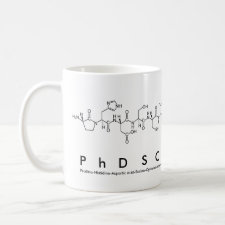
Authors: Jia MT, Zhu YY, Guo D, Bi XG, Hou XH
Article Title: Surface molecularly imprinted polymer based on core-shell Fe3O4@MIL-101(Cr) for selective extraction of phenytoin sodium in plasma.
Publication date: 2020
Journal: Analytica Chimica Acta
Volume: 1128
Page numbers: 211-220.
DOI: 10.1016/j.aca.2020.06.075
Alternative URL: https://www.sciencedirect.com/science/article/pii/S000326702030725X
Abstract: Core-shell magnetic Fe3O4@MIL-101(Cr) nanoparticles were synthesized via layer-by-layer self-assembly method. Using Fe3O4@MIL-101(Cr) as support, Fe3O4@MIL-101(Cr)@MIP was prepared with phenytoin as template, acrylamide as functional monomer, ethylene glycol dimethacrylate as cross-linker, methanol and acetonitrile as porogen, azoisobutyronitrile as initiator. The materials were characterized by a serious of characterization experiments. The prepared Fe3O4@MIL-101(Cr)@MIP was demonstrated to possess good separability, large adsorption capability, excellent adsorption selectivity, good durability and reusability via adsorption experiments. Subsequently, a magnetic solid phase extraction method (MSPE) based on Fe3O4@MIL-101(Cr)@MIP combined with high performance liquid chromatography-ultraviolet detector (HPLC-UV) was established for the determination of phenytoin sodium in plasma samples. Experimental parameters including pH, the amount of adsorbent, extraction time, elution conditions, the concentration of NaCl were investigated to optimize extraction process. The method was validated. The linearity was observed in the range of 0.05-40 μg mL-1 with a lower limit of quantification of 0.05 μg mL-1. The calibration equations were y = 0.2514x + 0.0319 (r2 = 0.9938), y = 0.2888x + 0.0472 (r2 = 0.9943), y = 0.2565x + 0.0418 (r2 = 0.9976), respectively. The recoveries ranged from 89.2 to 94.3%, intra- and inter-day precision (RSDs) ranged from 2.1 to 9.7% and 2.9-9.2%, respectively. The established MSPE-HPLC-UV method was time-saving, sensitive, accurate, environmental friendly, and drastically reduced the complex matrix interferences. The established method was successfully applied for phenytoin sodium determination in real plasma samples, providing new directions for therapeutic drug monitoring
Template and target information: phenytoin sodium, phenytoin
Author keywords: Phenytoin sodium, surface molecularly imprinted polymer, Metal organic frameworks, Magnetic solid phase extraction, Plasma samples



Join the Society for Molecular Imprinting

New items RSS feed
Sign-up for e-mail updates:
Choose between receiving an occasional newsletter or more frequent e-mail alerts.
Click here to go to the sign-up page.
Is your name elemental or peptidic? Enter your name and find out by clicking either of the buttons below!
Other products you may like:
 MIPdatabase
MIPdatabase









